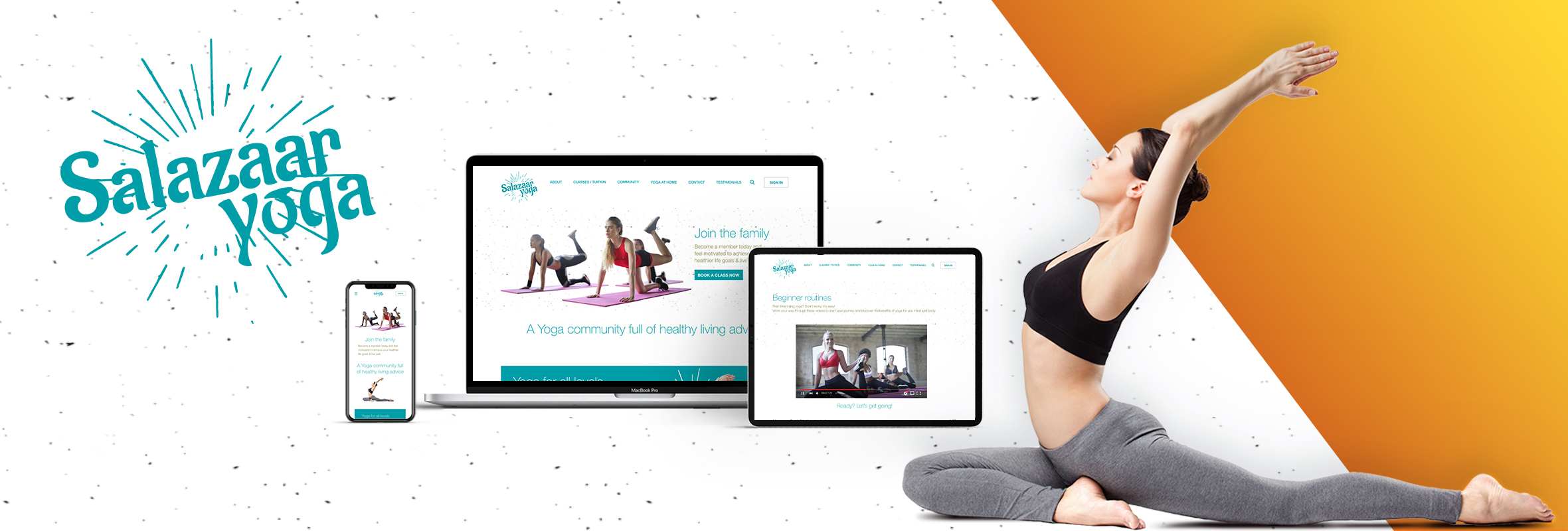- UX / UI
- Web Design
- Brand Design
Salazaar Yoga website
Using a full project workflow this project was designed for a independent yoga teacher. Project kick off documents, competitor research, user flow diagrams, personna research and wireframes were all created to provide solid foundation for this project.
The Problem
The client currently runs Yoga classes and private sessions which are mainly managed offline. This includes her booking process, which is managed via phone calls and then manually checking her physical diary for availability. The yoga teacher finds it difficult to stay in touch with clients away from sessions run at a local community hall. She wants to connect more frequently with existing clients and also attract new clients as her business grows. Her goal is to create a feeling of community amongst her clients and modernise her service. Printing sheets to pass on exercises, routines and other information is cumbersome and takes up a lot of her time. As the client has no experience of professional document creation software she feels her presentation suffers by looking basic and unprofessional.
Users & Audience
Fully understanding the user, their needs and the tasks they will carry out on site is key to the success of a site. Personna research tells us that the clients target market are busy females, aged between 25 and 45 with an interest in fitness and a holistic lifestyle (see personna screenshots below). The users needs and the desires of the client suggested the site will provide multiple online services i.e contact forms, booking management, knowledge base, forum. User flow diagrams help to organise the site structure and plan logical flows for users to accomplish their tasks efficiently. Research suggests that the majority of visitors will access the site via mobile devices so development must ensure a pleasurable experience whilst on the go.
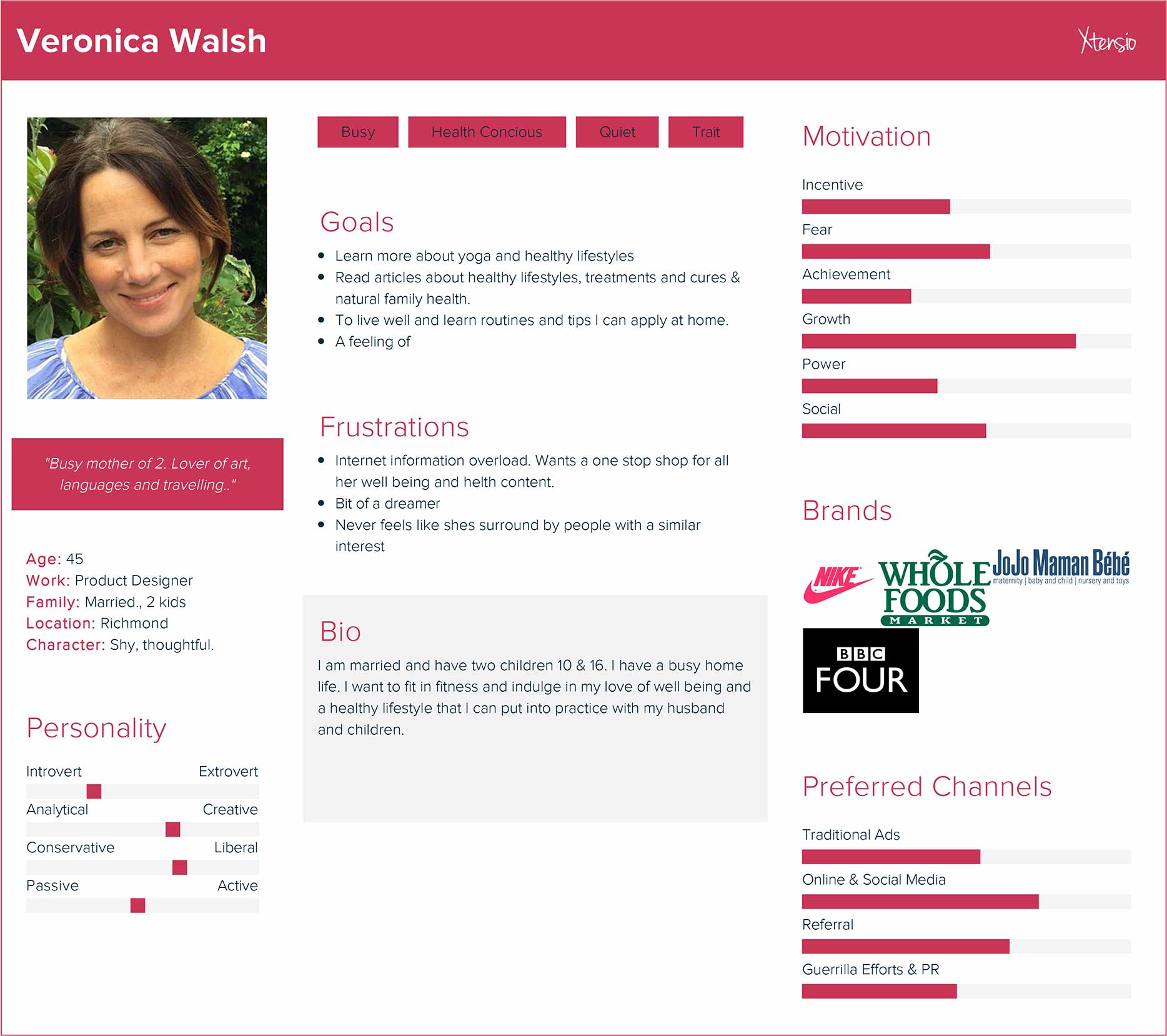
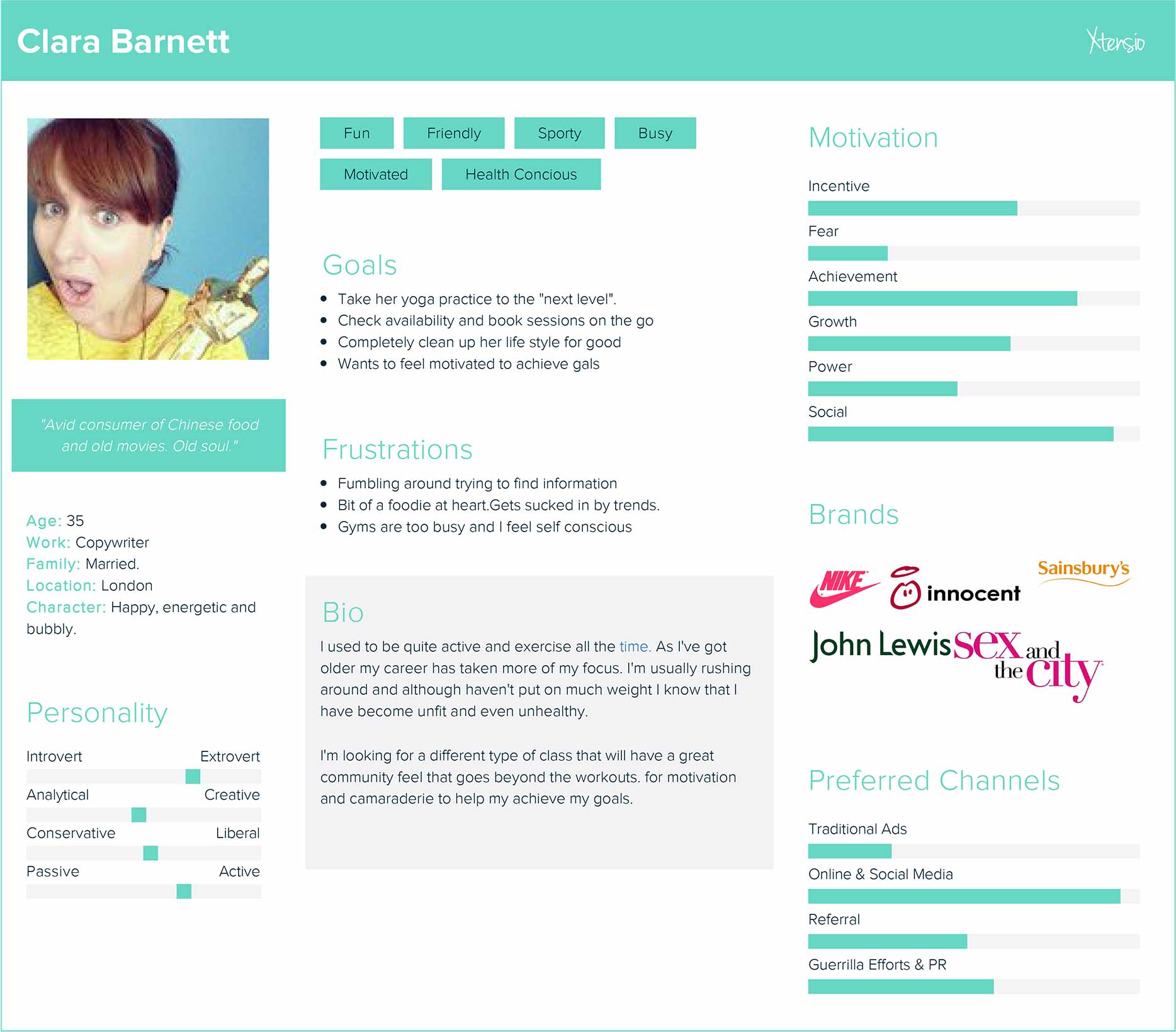
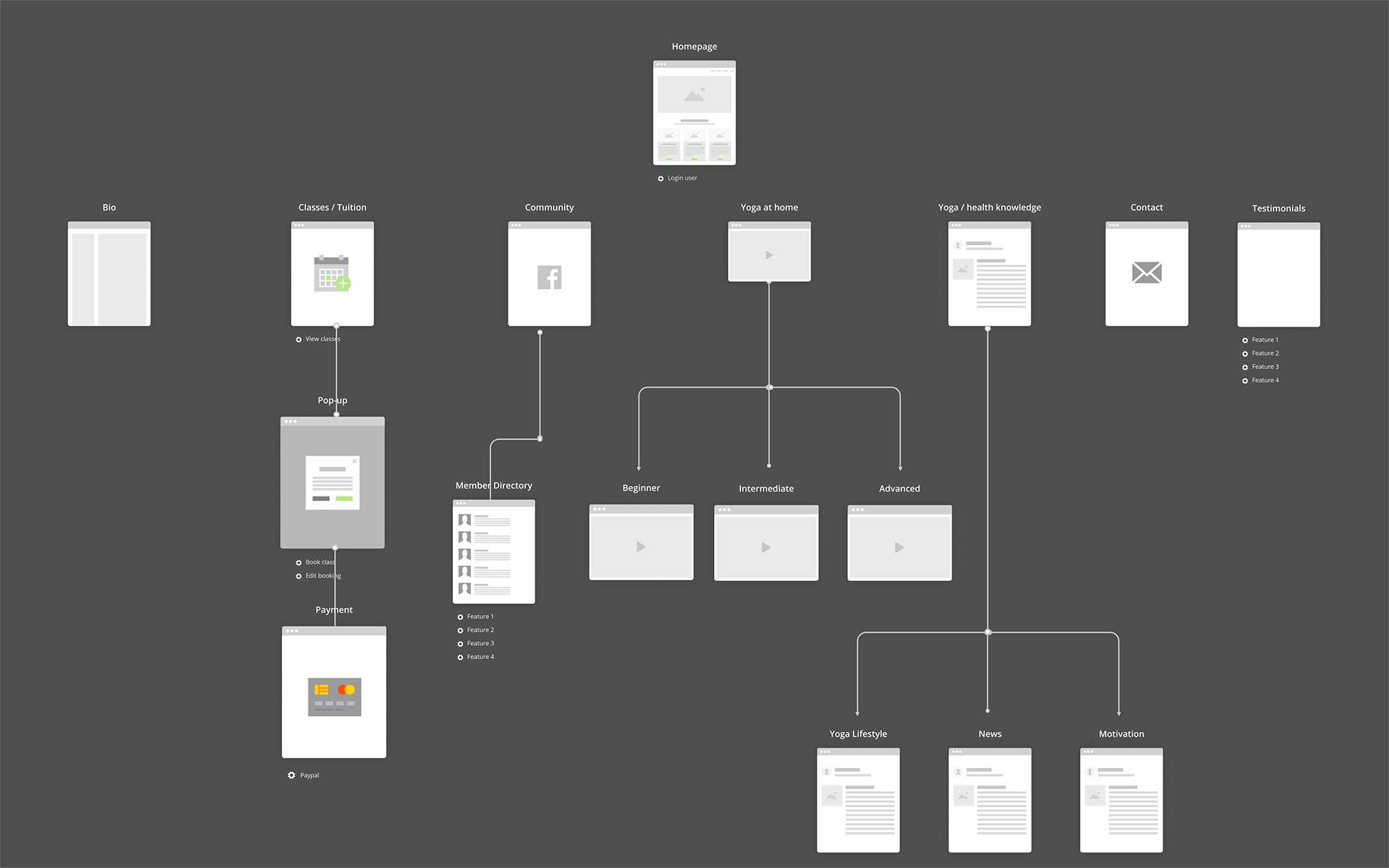
Design Process
Branding
See below
Content stratergy
Copywriting to ensure clear and concise information with no needless words.
Site Design
The design is broken down in to tasks that define each user journey where multiple ideas are generated to satisfy the user goal.
Wireframes
Different layouts are ideated based on methodologies, research and design patterns to satisfy user needs.
Prototypes
High fidelity working models of the site were created and usability testing conducted to highlight any problems that may cause friction to users completing tasks.
Design System
Site components, typography, colour palette, graphic assets are defined and documented to be handed off at the development stage.
Branding
Brand design was treated a separate process to the site development. Initial Research was carried out to understand more about what the client had in mind. The look and feel of this brand is based on the clients desire to bring a "new", "energetic" and "fresh" tone to her business and community. The industry is full of calming and muted brands, however the client wanted to convey the rejuvenating benefits of yoga that her approach offers. Further research and branding exercises were undertaken to fully understand what drives and motivates the client and how that can translate into the brands look and feel. The brand design process also included creating multiple mood boards with imagery, colours and typography variations to arrive on a final vision.
Logo Design
Logo design although incorporated into brand design has its own process. Various logo designs were created using different conceptual techniques to arrive at the final logo. The final logo captures requirements of the brief.
- Fontface - is a nod to the heritage of yoga whilst the tilted orientation adds an energy and fresh feel required from the client brief.
- Graphic elements - Lines eminating from the central point again convey the energy of the brand.
- Colour - Saturated colours anchor the vibrancy of the brand.
The logo is then tested and formatted to account for various use cases. For example the logo should be clear and legible when used at smaller sizes and the logo should also translate for use on various mediums such as in print or on natural materials as in the case of branded t-shirts.
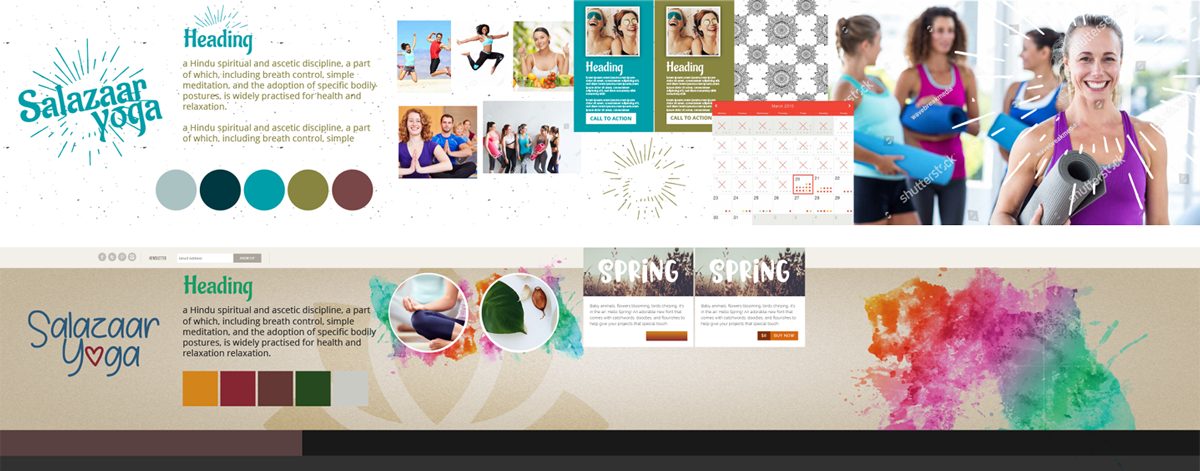
Conclusion
The result of the process is a site that meets the desires of the client as well as providing new and useful ways for users to interact and engage with the brand. Users have now the convenience to book sessions, communicate with their instructor and engage with the yoga community. Whether the user is at home on a desktop during the evening or in a sunny cafe on a mobile device the content consumed has been designed to be organised, clear and concise. The consideration given to the user experience results in task being completed quickly and easily providing a positive experience to the users.
The new brand is fresh, vibrant, welcoming and communicates the feeling of rejuvenation and an inviting sense of community.
